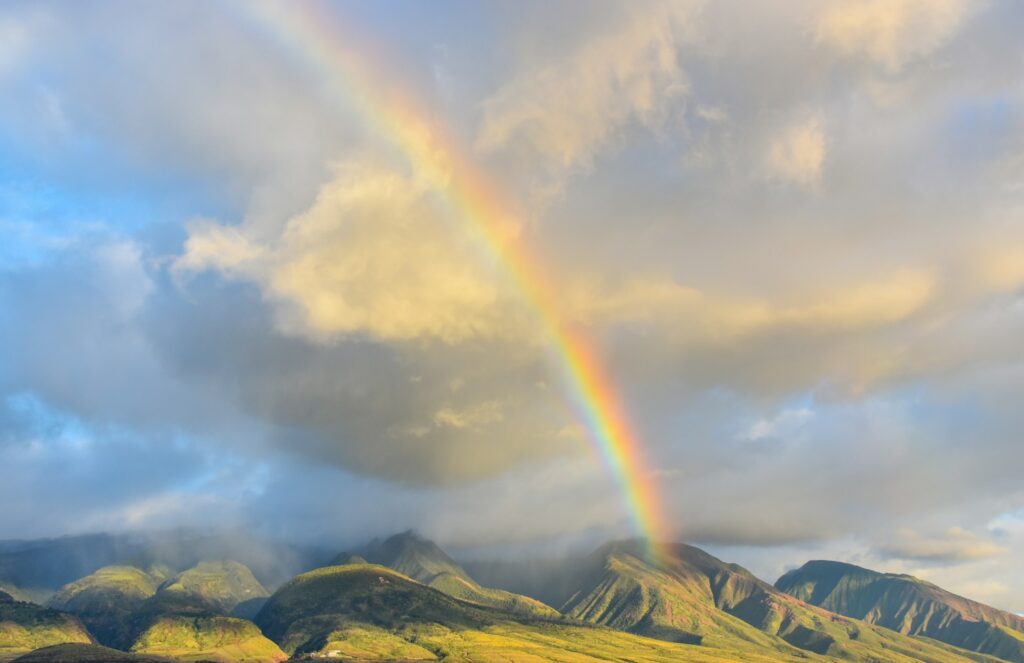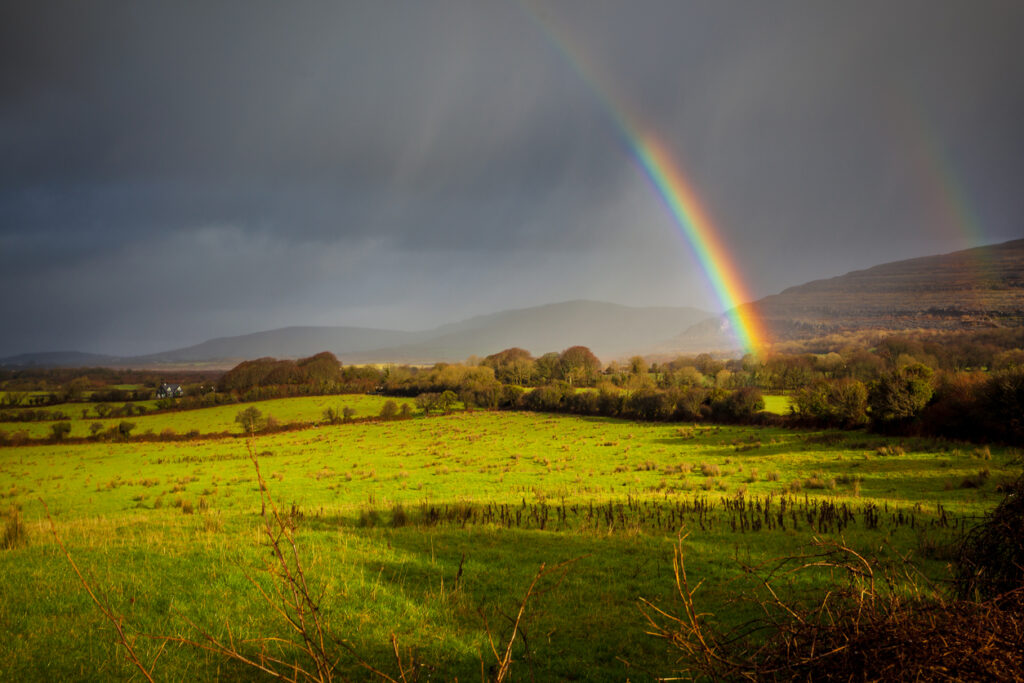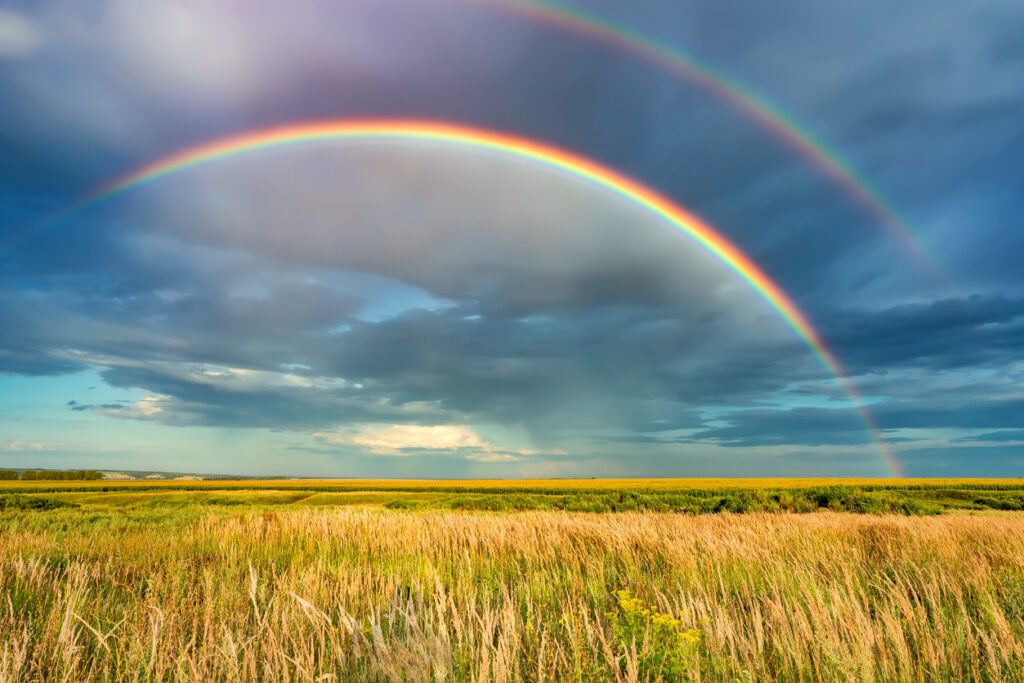Every time you see a rainbow, it looks the same: red at the top, violet at the bottom, and all the usual colours stacked in between.

Seriously–you’ll never see a rainbow that doesn’t follow that exact pattern. So why does it always show up like that, no matter where you are or when it appears? Turns out, nature’s got a very specific method behind that colourful magic.
It all starts with sunlight.

Rainbows only happen when sunlight hits raindrops at just the right angle. The light enters the droplet, bends, bounces around inside, and then exits. That process is what splits the white light into the full spectrum of colours.
Sunlight might look plain, but it’s made up of all kinds of colours mashed together. When it bends, those colours start to spread out—like pulling apart threads from a single string. And once that happens, they always show up in the same order, thanks to how light works.
Each colour bends differently.

The reason we get a specific colour order is because each wavelength of light bends by a slightly different amount when it moves through water. Red bends the least. Violet bends the most. Everything else lands somewhere in the middle.
This difference in bending, called refraction, is what causes the colours to separate inside the raindrop. Because the bending always follows the same rules, the colour order always comes out the same: red, orange, yellow, green, blue, indigo, violet.
The shape of a raindrop matters.

Raindrops are round enough to act like tiny prisms. When sunlight hits one, it behaves in a really specific way—bouncing and bending just enough to split the light and reflect it back toward us. Because raindrops are mostly uniform in shape and the light always interacts with them in a similar way, we get the same rainbow pattern every time. It’s not random—it’s physics being super consistent.
The angle has to be just right.

Rainbows only form at a certain angle—about 42 degrees between the sunlight and your eyes. That’s the sweet spot where all the light that’s been split and reflected inside the raindrop comes back toward you in the full colour spread. If the sun’s too high or you’re not standing in the right spot, the rainbow either disappears or gets cut off. However, when the angle is right, the colour sequence always lines up the same way, thanks to how light exits the droplets.
You’re only seeing one slice of the rainbow.

Rainbows are technically full circles, but we usually just see the top arc because the ground gets in the way. What you see depends on your position and where the light is coming from. Everyone sees their own version of a rainbow because it’s based on the specific set of raindrops reflecting light into *your* eyes. However, no matter where you stand, the order of colours stays locked in because the physics behind it never changes.
The order comes from the spectrum itself.

The visible light spectrum always goes in the same order, from long wavelengths to short ones. Red has the longest wavelength, violet the shortest. That natural sequence decides how the colours spread out when light is bent. So, the rainbow doesn’t just look like it’s following a rule—it actually is. The colour order follows the rules of light, not our imagination. That’s why you’ll never see a rainbow that starts with green or ends in orange. The order is locked in by science.
Refraction and reflection work together.

It’s not just one thing that creates a rainbow—it’s a combo move. Light refracts when it enters the raindrop, reflects off the back, and then refracts again as it leaves. Each of those stages contributes to how the light gets split and spread. This double-refraction process stretches the light into that iconic arc of colour. And because each stage follows fixed rules, the end result is always the same sequence, even if you don’t fully notice all the steps happening.
Double rainbows follow the same rule—with a twist.

Sometimes you’ll see a second, fainter rainbow above the main one. That’s a double rainbow—and while it still follows the same colour order, the second one is flipped. So red is on the bottom, violet on top. This happens because the light reflects twice inside the droplet before coming out. The extra reflection reverses the colours, but it still respects the same physics. Even when rainbows break the pattern, they’re still following the rules underneath.
Human eyes pick up the same range of colours.

The colours you see in a rainbow aren’t random—they’re the ones your eyes are built to detect. Humans are wired to see red through violet. So when sunlight is split into those colours, we all generally perceive them the same way.
Animals that see differently might experience rainbows in a whole other way. But for us, the sequence of colours is a direct reflection of how our brains interpret the visible spectrum. What feels magical is actually just incredibly well-aligned biology.
Nature loves a repeatable process.

Rainbows feel rare, but they’re built on processes that are weirdly reliable. If there’s sun, rain, and the right angle, the outcome will always be the same. No two rainbows are identical, but their structure never really changes. So the reason the colours are always in the same order? Because nature’s playing by the same rules every time. It’s not showing off—it’s just doing what it does best: consistency wrapped in a bit of wonder.